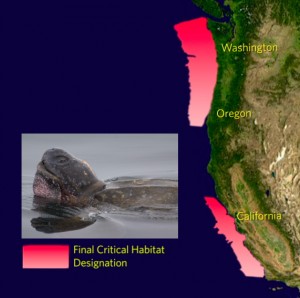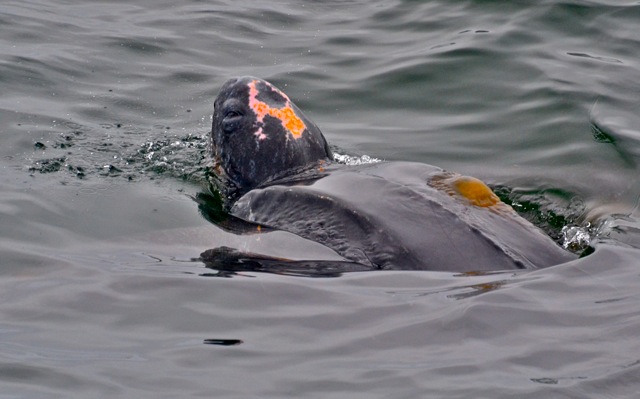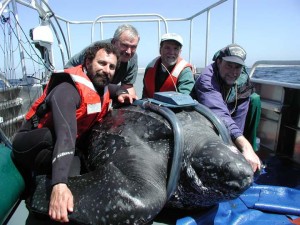Pacific Leatherback Turtles have been spotted in the coastal waters south of San Francisco earlier than ever before.
Sightings of sea turtles are rapidly approaching last years’ 23, with 17 showing off their thick shells so far, and it’s earlier than their usual arrival time in August.
“That’s pretty amazing. There’s still a lot that is not known, so every sighting you get is critical,” said Chris Pincetich, marine biologist with SeaTurtles.org.
He relays information on each sighting to marine biologists who are preparing to do field work in early August.
The leatherbacks journey from the Far East to the West Coast of North America to feast on brown sea nettle jellyfish, a culinary adaptation that’s helped ensure the leatherback’s 70 million years of existence.
In early July marine biologists reported the most abundant and dense jellyfish bloom seen in years, Pincetich said. A week later the ancient creatures started showing up, first in Monterey Bay, then by Santa Cruz, and now they are up to Half Moon Bay.

Life isn’t always easy for the Pacific leatherback turtle, whose population has plummeted by up to 95 percent in past several decades. The Sea Turtle Restoration Project has pushed for laws to better protect leatherbacks in California. A bill to designate leatherbacks as California’s official state marine reptile is in the Senate, and is expected to pass by September. The bill gives the leatherbacks some extra PR, but more importantly encourages leatherback education in public schools, recording of sightings, and communication about conservation practices with the turtles’ birth home, Indonesia.
In February, almost 17,000 square miles of offshore waters surrounding the San Francisco Bay were deemed a protected marine area for leatherbacks. Activities that harm the jellyfish require special consideration, and drift gillnets have been banned.
“The designation is a huge victory for the sea turtle, protection of its food and the awareness of this creature which is basically a living dinosaur,” Pincetich said.
The fishery regulations don’t take affect until August 15, and there’s no time to lose since a dead leatherback washed ashore in Monterey late last week.
Do you want to see the largest and oldest turtle on earth? SeaTurtles.org is teaming up with whale watching cruises to host several leatherback watch parties from August to October.



-300x224.jpg)
-197x300.jpg)